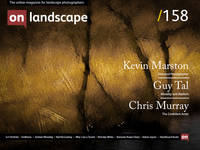Issues around being a photographer in a remote environment

Neil McCoubrey
I am a PhD student researching into the creative practices of a landscape photographer at Edinburgh Napier University. I am trying to understand why a landscape photographer chooses a particular location, particular subjects and then arranges the final composition. How does the photographer recognise the opportunity for making a photograph?
I am currently doing research into why photographers (and other tourists) find human constructions to be attractive focal points in remote and otherwise “natural” environments. In particular derelict structures appear to be favoured. In this article, I will position myself and my approaches to
photography relative to such locations, other photographers and the locals focusing on my experiences in Iceland.
I will start by discussing my own relationship to remote locations and their people then I look at“dereliction” and the issues around its popularity as a photographic subject.I am an urban, Western European, white male, and so I bring my associated, conditioned responses to any location I am photographing. Therefore, what I see and how I interpret it will not be neutral and will be different to that of a local.
Considering my responses, relative to Icelanders and their small communities, the greatest differences will be between my urban life experiences, with expectations of structure and comfort, versus their social and physical self-sufficiencies. I do not believe I could live in a small, remote community for any significant time as I would miss the ease of access to services and to the wider variety of people and social activities available in a large city. I think it would feel quite claustrophobic. As a consequence, I have a respect for those who can and do live in small, remote communities, whether by choice or not. They must have types of self-reliance, tenacity and stoicism to survive and even thrive, that I have never been required to develop. This probably makes me less critical in my approaches to photographing their environments.
My view is likely to be quite different to the way a resident of the area would interpret their own, vernacular landscape as described below by Yi Fu Tuan:
In our mobile society the fleeting impressions of people passing through cannot be neglected.Generally speaking, we may say that only the visitor (and particularly the tourist) has a viewpoint; his perception is often a matter of using his eyes to compose pictures. The native, by contrast, has a complex attitude derived from his immersion in the totality of his environment. The visitor’s viewpoint, being simple, is easily stated.. The complex attitude of the native, on the other hand, can be expressed by him only with difficulty. ~ Cited in Jakle, 1987, p.8
The image below is typical of the “sublime” that many photographers expect to find in Iceland.
However, and characteristic of my personal interests, I have included the functional gravel road and the snow markers to show this is not a wilderness. This is a vernacular landscape.


